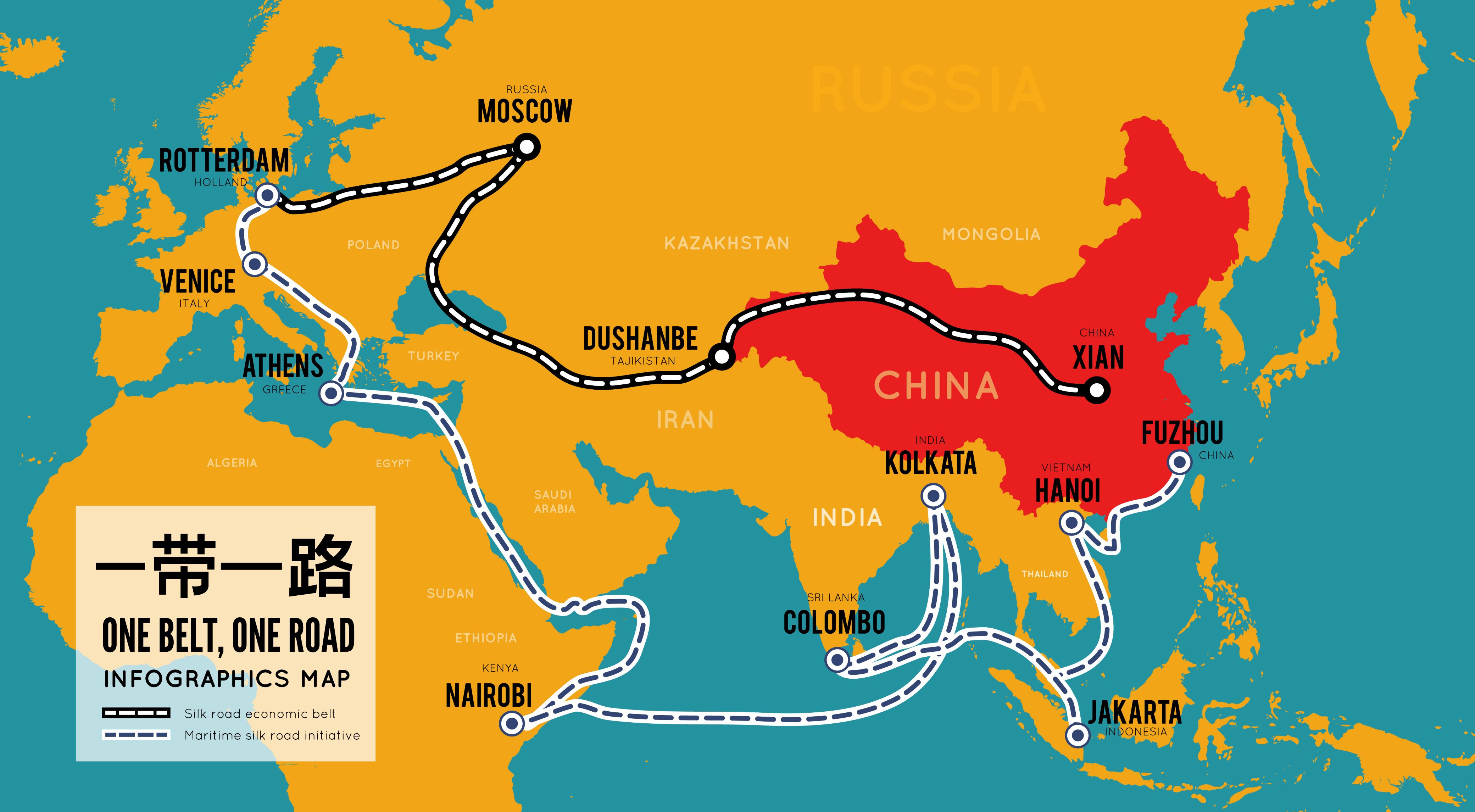
Today (7 September) marks ten years since the inception of China’s Belt and Road Initiative (BRI), designed to sustain China’s economic growth and catapult it onto the world stage.
The BRI has received a mixed legacy, with substantial foreign investment, particularly in developing nations, and the completion of dozens of infrastructure projects worldwide often overshadowed by accusations of nefarious geopolitical aims.
What is the Belt and Road Initiative?
Launched in 2013, the BRI began as a series of infrastructure projects designed to forge global economic connections.
Through a cross-section of financial sources, ranging from government policy banks, commercial banks, and Public Private Partnerships (PPPs) China set out to pour an estimated US$8tr into African, Asian and European nations.
The initiative draws heavily upon the heightened connectivity of the historic silk road trade routes that linked China to western countries in the years preceding the 19th century rise of maritime trade.
Impact
Over the past decade, hundreds of projects have been completed that fulfil the BRI’s aims.

The China-Europe Railway Express, opened in 2017, connects London to the Chinese city of Yiwu, while ports have been built in Pakistan and Greece.
Substantial investment in African transport has led to the advancement of the Trans-African Highway Network, including the opening of the Cairo – Cape Town highway.
In addition to physical infrastructure, China has created economic corridors between itself and Pakistan, Laos, Thailand, Brunei, Myanmar, Mongolia and Russia.
Throughout the past decade, China has also signed Memorandums of Understanding (MOUs) with 140 countries and 32 international organisations with nations around the world.
The growth of its contributions to world trade are evident in rising foreign direct investment (FDI) figures; US$82bn in 2012, rising to US$154bn by 2020, making China the world’s current number one overseas investor.
Controversy
The initiative has not been universally welcomed and accusations that the BRI conceals a set of ulterior geopolitical motives have dogged the project.
The frequent inability of recipient governments to repay Chinese loans, and China’s requisitioning of the newly built infrastructure, have raised many eyebrows internationally.
The centre for global development issued a report that found several countries, including those in new economic corridors, such as Laos, Mongolia and Pakistan, were all at risk of debt distress after accepting BRI-related loans.
The US called the project an example of ‘debt trap diplomacy.’
As high interest rates ratcheted the total debt to the majority of GDP, concerns were raised about how effective the projects really were advancing the economies of debtor nations.
Trading with China
Institute of Export & International Trade customs and trade specialist, Hamish Mackay, has international business experience in from a career in aerospace and defence.
Reflecting on changes to doing business with China over the past decade, he sees a sharp rise in perceptions of both risk and reward, commenting:
“During the past decade, a great deal of focus has been put on the risks and costs of doing business with China.
“The reality is, while we all want to improve our trade figures, transparency is a key part of doing business, and there is still a huge perception of risk around doing business with China.”
Geopolitical factors are significant, with growing tensions between the US and China influencing how countries like the UK consider engaging.
Mackay added:
“China’s stance over Russia's invasion of Ukraine and, equally, Chinese relations with Pakistan and other nations seem to have caused some countries to view China with more caution.
“It has become more important to carry out research and due diligence when looking to conduct business in China.”
What’s next?
Despite a dip in external investment, due to challenges wrought by Covid-19 and the current economic slump, an Economist Intelligence Unit (EIU) report predicts China will try to boost external investment.
However, analysing past investment trends, and in light of current geopolitical alignments, EIU believes economically robust ASEAN nations, such as Singapore, Indonesia and Malaysia will be top of the list for future investment.
The South-East Asian region was identified as a strong contender for China’s cash based on strong growth forecasts and emerging middle-class.
Bolstered by the Regional Comprehensive Economic Partnership (RCEP) signed by China, the ten ASEAN nations, Japan, South Korea, Australia and New Zealand in 2020, this could signal a pivot towards its immediate geographic context in the years to come.



